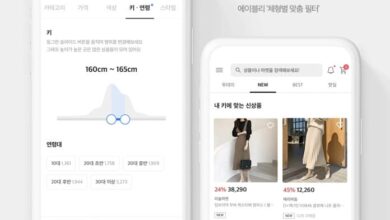Post-Corona New Marketing Attracts Attention
Diversification of Online Consumption Structure with Live Commerce and Short Clips
The live commerce market is gaining popularity.
The domestic live commerce market has been entering the era of the Warring States since last year, starting with portal companies such as Naver and Kakao, and recently, Coupang has joined. Not only e-commerce like Coupang but also telecommunications companies like KT have recently jumped into live commerce, and growth is anticipated.
The live commerce market one step ahead is China.
China has already shown that the online market is changing into the live commerce market. According to KOTRA, due to the Chinese government's strategy to expand domestic demand and the rapid digital transformation trend in China's consumption and distribution market due to COVID-19, new online platform business models are being segmented and upgraded.
KOTRA's 'Post-Corona New Marketing, China's Live Commerce Market' report revealed that as of the end of 2020, China's online users numbered 989 million, an increase of 85.4 million from March 2020. Additionally, the online sales volume in 2020 was 11.76 trillion yuan, a 10.9% increase from the previous year, of which the online sales of physical goods accounted for 24.9% of the total retail sales of consumer goods, reaching 9.76 trillion yuan. As of December 2020, China's online shopping users were 782 million, an increase of 72.15 million from March the same year, accounting for 79.1% of all online users.
| Year | Live Commerce Market Size |
| 2017 | 19 billion yuan |
| 2018 | 133 billion yuan |
| 2019 | 433.8 billion yuan |
| 2020 | 961 billion yuan |
| 2021 (Forecast) | 1.012 trillion yuan |
The New Paradigm of the Digital Economy 'Live Commerce'
Especially, one of the new marketing methods in China's online market, the live commerce industry, known as a combination of live broadcasting and e-commerce, where famous influencers (Wanghong) sell products through live streaming.
The Chinese live commerce industry has been growing since 2019, emerging as a new paradigm of the digital economy that encompasses 'online-offline and physical consumption' and has seen significant growth. The number of live commerce e-commerce operators in 2020 was approximately 388 million, and 66.2% of all e-commerce users purchased products through live commerce. Among them, 17.8% spent more than 30% of their total internet shopping expenditure on live commerce.
According to the National Bureau of Statistics of China, the total sales of consumer goods in 2020 were 39.1981 trillion yuan, a decrease of 3.9% from the previous year. However, online sales increased by 10.9% from the previous year to 11.76 trillion yuan, and among them, the online sales of physical goods increased by 14.8% to 9.759 trillion yuan, and the proportion of total consumer goods sales increased by 4.2% from the previous year. In particular, food increased by 30.6%, clothing and fashion by 5.8%, and household goods by 16.2%.
2020 Analysis of the Chinese Live Commerce Market
While traditional offline industries suffered greatly due to COVID-19, online sales saw significant growth. In addition, the live commerce marketing method has established itself as an effective marketing channel in terms of promoting online consumption.
According to the China Internet Network Information Center (CNNIC), as of December 2020, China's online live broadcast customers numbered about 617 million, an increase of 57.03 million from March 2020, accounting for 62.4% of all netizens. Among them, the number of live commerce broadcast users linked to sales was 380 million, an increase of 191 million from March 2020.
According to the announcement by the Ministry of Commerce of China, the total number of live broadcasts on major e-commerce platforms exceeded 24 million times in 2020. Additionally, according to iimedia, the size of China's live broadcast e-commerce market in 2020 was 961 billion yuan, a 121.5% increase from the previous year. The total size of China's live commerce industry is expected to continue its rapid growth, reaching 1.2012 trillion yuan in 2021.
Chinese Live Commerce Platforms Entering Maturity
In 2016, major platforms such as Taobao and JD.com introduced a new model of 'Live Broadcast + Content + Online Sales.' Since then, in 2018, the development phase began, and video platforms such as Kuaishou and Douyin opened up channels for live commerce, integrating with third-party sales platforms like Taobao and Tmall and resulting in online sales.
2019 is classified as the maturity period of Chinese live commerce. During this period, the number of live commerce users increased, government policy support for live broadcast products was provided, and the emergence of famous influencers led to explosive growth in the popularity of live commerce. Especially in 2020, due to the COVID-19 situation, the home economy was activated, normalizing online live broadcast marketing and showing a trend where emerging group-buying platforms such as Pinduoduo and social media platforms like WeChat and Xiaohongshu are also adopting live commerce marketing methods and expanding their businesses.
| Platform | Top 100 GMV Wanghong (Number) | Average Sales per Session (10,000 yuan) | Average Number of Viewers per Session | Average Price (yuan) |
Taobao | 45 | 1,570.6 | 1,050,441 | 249 |
Kuaishou | 41 | 1,405.25 | 869,541 | 162 |
TikTok | 14 | 507.54 | 1,080,546 | 385 |
#Platform Features
- Taobao
- First traditional platform to combine live commerce format
- Distinct consumer purchase intention and high conversion rate
- Especially during large-scale event periods like 618, Double 11, exceptional traffic concentration effect - Kuaishou
- Consumption layer of 3rd and 4th tier cities as main customers, using short clip videos
- Popular in the field of lifestyle content, showing stable conversion rates in live commerce - TikTok
- Main customers are the younger generation (Gen Z) in 1st and 2nd tier cities
- Producing high-quality short clip content based on purchasing power
- Higher customer focus, but lower conversion rate to sales compared to other platforms
There are functional differences among China's e-commerce platforms, and even within the same type of platform, users' ages, interests, and purposes of use differ, leading to different effects. According to statistics that aggregated the number of viewer responses by platform, including Taobao, Douyin, Kuaishou, Tmall, JD.com, and Xiaohongshu, which have recently gained popularity for live commerce, social live commerce platforms (Douyin, Kuaishou) showed better performance compared to traditional e-commerce platforms (Taobao, Tmall). Especially, Douyin's live commerce surpassed Taobao, ranking first with a consumer hit index of 33.31, followed by Taobao, Kuaishou, and JD.com in order.
2020 was a year where not only traditional e-commerce platforms but also social network platforms such as Xiaohongshu, WeChat, and Bilibili actively entered the new marketing model combining live broadcast + e-commerce for market penetration.
As of December 2020, the total sales value (GMV) of the TOP1000 Wanghong across the three platforms Taobao, Douyin, and Kuaishou was measured, and the cumulative sales of the TOP1000 Wanghong reached a total of 255.7 billion yuan. Among them, Taobao Live accounted for 106.8 billion yuan, Kuaishou for 102 billion yuan, and Douyin for 46.9 billion yuan, representing 41.77%, 39.89%, and 18.34% of the market share, respectively.
From June to December 2020, the number of top 100 Wanghong (influencers) in terms of sales ranking within the three major platforms was 45 for Taobao, 41 for Kuaishou, and 14 for Douyin, with the total sales amount of these Wanghong during this period being 113 billion yuan.
Based on the two figures above, Douyin live broadcasts have the highest recent viewer responses, but when compared to the annual total product sales amount (GMV), Taobao's dominance is still apparent. This is attributed to Taobao's customer base having a high purpose of purchase and Taobao having a stable system from supply chain, payment, after-sales service (A/S), to logistics, leading to a high conversion rate to actual purchases.
In addition, while Taobao has a diverse range of influencers (Wanghong) used in live commerce, such as stars, announcers, and store broadcasts, Douyin and Kuaishou still face challenges in directly linking short clip advertisements and content to sales.
| Rank | Platform | Wanghong | Total Sales (Billion Yuan) | Total Sales Volume (Million) | Followers |
| 1 | Taobao | Wei Ya | 225 | 16,515 | 39,080,107 |
| 2 | Taobao | Li Jiaqi | 139 | 9,860 | 380,547,567 |
| 3 | Kuaishou | Xin Ba | 76 | 6,421 | 70,876,000 |
| 4 | Kuaishou | Dan Dan | 46 | 4,227 | 25,284,000 |
| 5 | Taobao | Xue Li | 40 | 1,937 | 19,185,575 |
| 6 | Kuaishou | San Da Ge | 30 | 670 | 53,244,000 |
| 7 | Taobao | Li E Bao Bao | 21 | 1,660 | 7,513,355 |
| 8 | Douyin | Luo Yonghao | 18 | 889 | 15,504,077 |
| 9 | Kuaishou | Su Da Piao Lang | 17 | 1,083 | 17,410,000 |
| 10 | Taobao | Chen Ji Ye | 17 | 1,277 | 15,426,416 |
The Growing Influence of Wanghong and Popular Products in Live Commerce
From June to December 2020, low-cost consumer goods such as beauty, skincare, lifestyle (women's, men's fashion, clothing) and food (snacks) performed well in live broadcast sales. According to Zhao Shang Securities, among Kuaishou's total sales of 40 to 50 billion yuan, food accounted for 40%, household items about 30%, and cosmetics about 30%. The average price of the top ten best-selling items, excluding mobile phones, was below 200 yuan, showing that low-cost consumer goods had significant sales effects.
The role of influencers (KOL; Key Opinion Leader) who directly communicate with consumers and directly influence sales in live commerce marketing is very important. From June to December 2020, the total sales of the top 100 Wanghong by GMV were 113 billion yuan, and the sales impact of the top ten Wanghong was 63 billion yuan.
As the live commerce market in China expands, the Chinese government is strengthening regulations related to live commerce.
This is because issues such as false advertising, data manipulation, and distribution of counterfeit products are occurring consecutively. According to the statistics of China's 12315 (consumer complaint hotline) announced by the National Market Supervision Administration in the third quarter of 2020, there were 21,900 reports related to online live broadcasts, a 479.6% increase compared to the same period last year, with other issues such as false promotion, post-purchase exchanges and returns, and consumer misinformation being raised.
The China Consumer Association also reported that in 2020, the satisfaction scores of Chinese consumers for each platform were above 80 points for traditional platforms such as Taobao, Tmall, and JD.com, while Douyin, Mogujie, and Kuaishou were at a medium level, and the live broadcast purchase satisfaction for Pinduoduo, Douyu, and Huya was at the lower end. The overall satisfaction score for consumers' live commerce purchasing methods is 79.2, with the overall shopping experience satisfaction score being 81.9, indicating good recognition and satisfaction, but there is still room for improvement.
| Rank | Product Category | Total Sales (Billion Yuan) | Average Price (Yuan) |
| 1 | Beauty/Beauty Care | 233.89 | 164 |
| 2 | Women's Clothing/Women's Products | 157.91 | 178 |
| 3 | Color Cosmetics/Perfumes/Beauty Furniture | 59.97 | 79 |
| 4 | Snacks/Nuts/Beauty Tools | 59.97 | 36 |
| 5 | Cleansing/Hygiene Products | 33.65 | 53 |
| 6 | Men's Clothing | 24.71 | 181 |
| 7 | Fashion (Bags) | 23.12 | 141 |
| 8 | Mobile Phones | 22.76 | 1,387 |
| 9 | Underwear/Living Clothes | 20.1 | 73 |
| 10 | Coffee and Other Beverages | 20.09 | 74 |
New Way of Live Commerce Productization: Entertainment + Content
Looking into the live commerce industry in China in 2020, various emerging platforms appeared, and new ways of productization that fuse sales with entertainment and content have been attempted. It is now an era where 'everyone and everything can be sold via live broadcast,' moving beyond the realm of professional broadcasting to include even real estate sales live broadcasts.
Douyin (ByteDance) has also been working to solidify its own sales channels, moving beyond being a simple entertainment content platform. Sales from Douyin's stores increased by 876% in 2020 compared to 2019, and from October 2020, the platform has been increasing the use of its own stores instead of integrating with third-party sales platforms like Taobao.
According to Douyin officials, simply opening a store and entering is not the end; subsequent continuous content production and operation know-how and budget strategies are necessary.
The rapid growth of independent local brands should also be noted. The top three brands in sales volume during 2020 were all Chinese local brands (FLORASIS, Perfect Diary, Three Squirrels), and global luxury brands such as L'Oréal (7th) and Lancôme (9th) also ranked in sales volume.
According to Taobao's 11.11 live broadcast analysis report, during the Double 11 (11.11) Singles' Day period, 250,000 brands and 5 million stores participated, with live broadcast customers totaling about 300 million. There were 33 live broadcasts that recorded sales of over 100 million yuan and over 500 live broadcasts that made more than ten million yuan, with 53% participation from Chinese local brands.

Source: Google
The Chinese online market is a fierce battleground for numerous global and local Chinese brands. Through detailed analysis of the live commerce marketing industry, domestic companies should establish differentiated marketing utilization strategies according to each company's product characteristics and situation. Especially, it is necessary to devise effective marketing strategies between global luxury brands with brand recognition and financial power and rapidly growing Chinese local brands with price competitiveness.
For emerging local brands in China, it is crucial to secure initial recognition and expand market share by lowering costs through partnerships with global major cosmetic OEM companies while effectively utilizing the latest Chinese marketing methods (SNS, live commerce).
Domestic companies should also establish customized business marketing strategies based on a systematic understanding of new marketing channels such as live commerce and short clips and continuously produce products and content that match the flow of change.
Read more this category
 1. "Same Puffer, Different Vibe: Cha Jung-won vs. Jung Ryeo-won"
1. "Same Puffer, Different Vibe: Cha Jung-won vs. Jung Ryeo-won" 2. "Chic Black vs. Elegant White: Contrasting Coat Styles"
2. "Chic Black vs. Elegant White: Contrasting Coat Styles" 3. G-Dragon's Custom Chanel Look at 'Weber Mensch' Finale
3. G-Dragon's Custom Chanel Look at 'Weber Mensch' Finale 4. Han So-hee Stuns in Radiant White Dress
4. Han So-hee Stuns in Radiant White Dress 5. Hot Summer, Hot Body 'Soyou' Photoshoot
5. Hot Summer, Hot Body 'Soyou' Photoshoot 6. Generation Z has also fallen for the charm of 'RAdog'
6. Generation Z has also fallen for the charm of 'RAdog' 7. Creating the 'Next Commerce Ecosystem' with ABLY
7. Creating the 'Next Commerce Ecosystem' with ABLY







